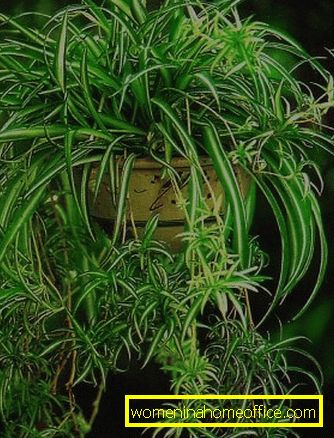Curly indoor plants
There is such a sign that if you grow curly indoor plants in a house, then envy and gossip cannot be avoided, but this is nothing more than a prejudice, and it’s just stupid to refuse such wonderful flowers because of it. Everyone has the power to grow vines at home and provide them with proper care. Curly indoor plants perfectly complement the interior, as well as uplifting and as if taking you to the hot tropics.
Curly flowers are great for decorating walls or reviving dark empty corners. How much you want to fill your house with climbing flowers, of course, you decide, but in any case it is important to know the conditions of such plants.

Care for climbing plants
Curly flowers are different from ordinary ones, and therefore care for them is somewhat different. This is especially true of watering, because if the flowers are located high, their hostesses face a number of issues.
- To avoid water getting on the floor, you can put a rubber cap on the pots before the irrigation procedure, then after the water is completely absorbed, after about an hour, it can be removed.
- Plants on the walls can be watered and differently, for example, put a piece of ice on the surface of the soil in a pot that will slowly melt and moisten the earth. Or, put tea bags on the pan, which absorb excess moisture during watering.
- Many climbing plants like watering, so do not forget to water them, and then they will look much more attractive.
- Such plants need regular spraying from a spray bottle, thanks to which they will become more luxurious and there will be no dried leaves on them.
- From time to time it is possible to arrange a water bath for the flowers, put them in the bath and pour a small, cool stream from the shower.
- In winter, watering climbers should be less common, but you still need to carefully monitor the soil moisture and prevent it from drying out.
- Climbing plants prefer medium or low light, so place them in corners or poorly lit areas of the room.
The most common climbing plants
- In our country from climbers well settled down ivy. This is a completely unpretentious plant, all you need is to water it regularly and sometimes cut off the grown stems. Common ivy is the decoration of any room and you can let it grow in any shape, or you can make the shape of a rod from a plant. To do this, carefully insert a grate or a bamboo stick into the ground, while doing so do not disturb the structure of the root ball and the roots that are on the soil surface. Secure the shoots of ivy with a soft ribbon or special clips.

- Chlorophytum crestedrefers to one of the most common climbing plants. It doesn’t cause any problems to its owners and easily acquires new shoots. In addition to its beauty, chlorophytum has another important quality - it can absorb harmful and toxic substances from the air, which helps purify the atmosphere. Care of chlorophytum consists in regular watering and removal of dry leaves. The roots of chlorophytum often become crowded in a pot, and the plant needs a transplant, which is best done in March. Young chlorophytum is best transplanted once a year. The soil for chlorophytum should consist of a mixture of humus, peat, sod land and sand. It is better to transplant in March or April. Chlorophytum in the summer needs watering several times a week, but do not overfill it, because the plant does not like excess moisture in the soil, and in the autumn and winter period, provide a more moderate watering. A frequent problem with chlorophytum is dry ends - this means that the plant needs additional feeding or transplanting into a larger pot.
- If you want to enjoy blooming indoor plants at home, then stop bellflower ravnolistnom. Such a plant blooms when it blooms with very beautiful delicate flowers of blue and white, which look like bells. If you properly care for this plant, it will delight you with frequent flowering and a large abundance of flowers, which are often even larger than the leaves. It is necessary to have an equal-shaped bell in a shady cool place. Such a climbing plant does not need frequent watering, as it reacts extremely poorly to high humidity.

- Hoya (wax ivy) another great flowering climber with braid-like shoots. On short petioles fleshy leaves are located, and fragrant flowers grow umbrella-shaped inflorescences. The petals of the flowers are white with various shades - cream, green or yellowish. As the indoor flower is best to choose hoya meaty, as it is the most unpretentious. Hoyi do not need special care, they easily multiply, and within 10-15 years they will delight you with their flowering.

- Climbing Philodendron -The most popular climbing plant among philodendrons, in growing it is very unpretentious. The soil for philodendron should consist of soil with the addition of peat or of peat-based substrate. Transplant this plant in the spring or early summer. The philodendron loves bright light, but not direct sunlight. During the growth period, keep the soil moist and spray the foliage regularly and water the soil every two weeks with fertilizer. Sometimes flower nodes can be strongly drawn out, then move the plant to a more lighted place.
In addition to the above listed indoor plants, there may be identified such climbing flowers as clerodendrum, passiflora, stephanotis, Roitsissus rhombic.From blooming the most popular ipomoea, allamand, stephanotis. There are also groups of climbers - acanthus, grapes, creepers, and this is not a complete list of climbing flowers. New exotic species of climbing indoor plants appear regularly, which replenish the wonderful world of these plants.